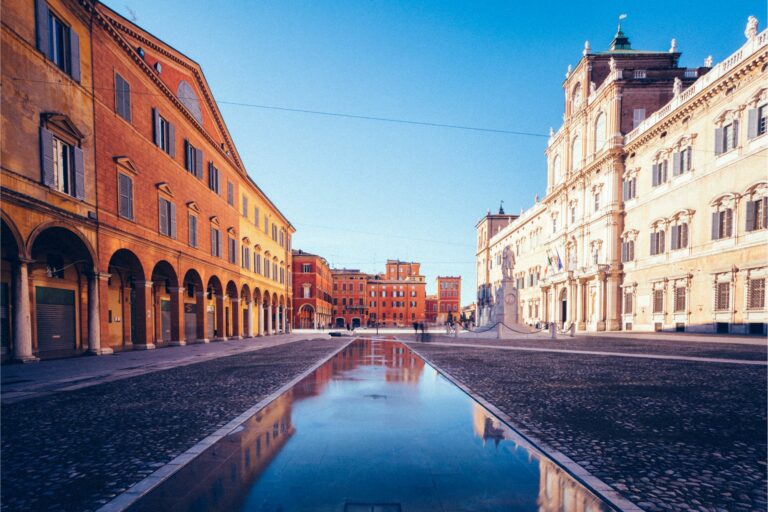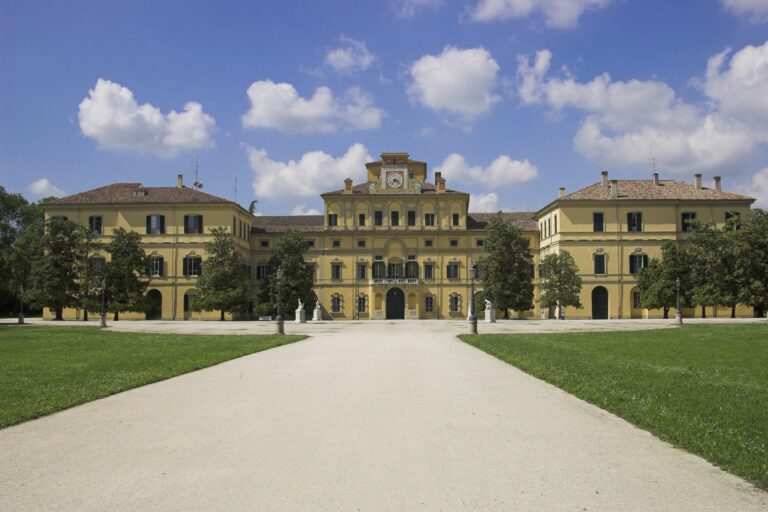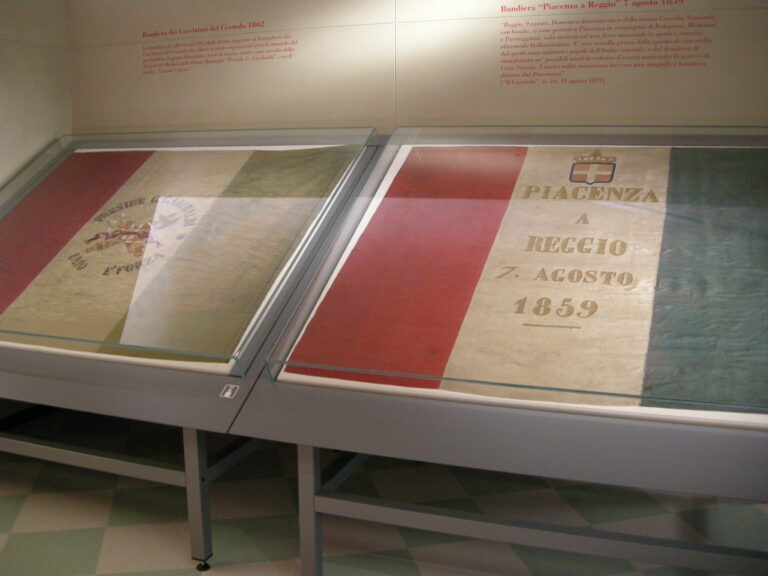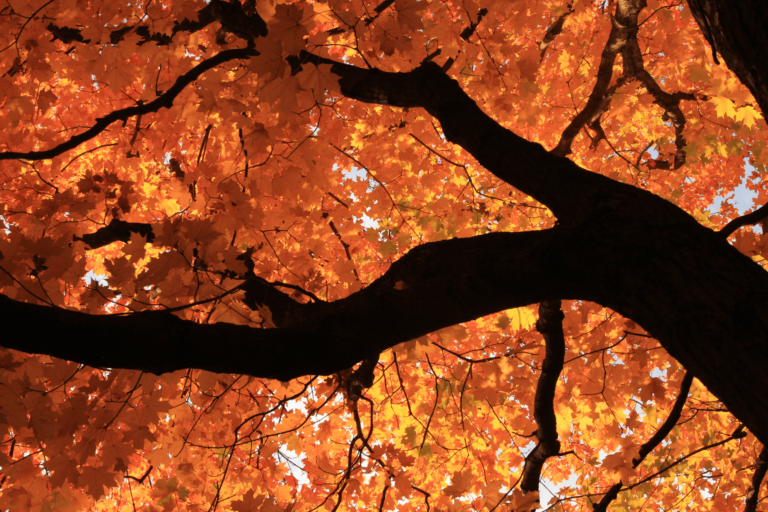The Ariosto and Boiardo Cultural Park is a route that winds through the Reggio Emilia area, touching the places that inspired the works of two extraordinary authors, Ludovico Ariosto (Reggio Emilia 1474 – Ferrara 1533) and Matteo Maria Boiardo (Scandiano 1441 – Reggio Emilia 1494), who have left an indelible mark in literary aesthetics and in the history of poetry. The itinerary, to be covered partly on foot and partly by car (or bicycle), begins in Reggio Emilia and stops in Scandiano and Albinea, before ending in the municipality of Canossa.
Malaguzzi Houses – Reggio Emilia
The route starts from the historic center of Reggio Emilia. On the corner between Via Palazzolo and Vicolo delle Rose, a few steps from Piazza Camillo Prampolini, there are two houses of the Malaguzzi, a rich and influential family from Reggio Emilia to which Daria, Ludovico Ariosto’s mother, belonged. On the facade an old plaque reads: “Here was the home of the Malaguzzi family, Ariosto’s maternal family. The angel with the shield remains original”. The Malaguzzis also had a house on the corner of Via del Cristo and Via Fornaciari, where the poet is supposed to have been born.
Cittadella Park – Reggio Emilia
We then continue to the Public Gardens (also known as Parco del Popolo), in whose area once stood the ancient Citadel, a castle built by the Gonzagas starting from 1339 as the seat of noble power. Here Matteo Maria Boiardo was captain of the Reggio Emilia seat of the Estense Duchy. And Ludovico Ariosto could also have been born here, as his father was commander of the Reggio garrison at the time. In the park, not far from the Concord Monument, there are the statues of the two poets, created in 1916 by the Reggio Emilia sculptor Riccardo Secchi.
San Maurizio – Reggio Emilia
In the San Maurizio area, a few kilometers from the Public Gardens, a terracotta triumphal arch introduces the monumental complex of Mauriziano, the Malaguzzi country villa. Ariosto spent periods of pleasant holidays there, later remembered in the Satires: “Already there were sweet invitations to fill the papers / the pleasant places of which our Reggio, / my native nest, has its share. / Your Mauricïan I always long for, / the beautiful room, the nearby Rhone…”. Among the rooms of the building, those that most attract attention are the Camerino degli Orazi e Curiazi, the Camerino dei Poeti and the Camerino dell’Ariosto. The rooms feature sixteenth-century frescoes depicting scenes of love, hunting, landscapes and figures of men of letters and poets.
Rocca dei Boiardo – Scandiano
After leaving Reggio Emilia, the route continues to Scandiano. The Rocca (called “dei Boiardo” because the author of Orlando inamorato was born, lived and governed here) is a monument of great historical and cultural value. Built in the 14th century by the noble Da Fogliano family as a place of defence, it was then transformed into a stately home by the Boiardo family and finally into a Renaissance palace by the Thiene marquises and the princes of Este. The building presents itself today as a fascinating stratification of architectural styles: medieval, Renaissance, baroque and modern. The most artistically valuable environment is the Estense Apartment, modified to its current guise at the beginning of the 18th century.
Torricella Castle – Ventoso di Scandiano
The Torricella Castle, also known as the Torricella or Castel Cugini (after its current owners), stands on the hills above the hamlet of Ventoso (3 km south of Scandiano). Built in the first half of the 14th century by the Da Fogliano family, it was transformed into a summer residence by the Boiardos in the following century. Tradition has it that Matteo Maria Boiardo composed part of Orlando inamorato here. In 1863, now reduced to terrible conditions, it was sold to Professor Prospero Cugini, who entrusted its renovation to the Reggio Emilia architect Pietro Marchelli, who brought the building back to its original appearance of a medieval fortification.
Tresinaro – Scandiano
Boiardo has mentioned several times the Tresinaro torrent which “wets the lands of Scandiano and Arceto and flows into Secchia near Rubiera”. It probably inspired the verses “As in winter, in the wet weather, / down from a great mountain comes a river in a vault, which flows over the ruined bank, / thick with rain and melted snow: so came that furious king, / with wrath large and with a great storm…”. Boiardo mentions it in the second Latin eclogue and in the letters together with Riotorto, Canale di Secchia and Crostolo.
Church of Santa Maria dell’Uliveto – Montericco di Albinea
Continuing on Via Pedemontana you reach Montericco (a hamlet of the municipality of Albinea), where the Church of Santa Maria dell’Uliveto is located. In 1506 Ariosto, who had obtained the minor orders and therefore the status of cleric, received the parish church but a dispute with Count Ercole Manfredi led him to renounce it. The church, dating back to a period before the 10th century, still retains the medieval structure inside. In the apse basin you can admire an important fresco depicting the Madonna enthroned on an immense cloud.
Monte Jaco – Albinea
The landscape of Monte Jaco (or Monteiatico), described in his work, and where he often stayed in the hot summers, guest of the Malaguzzi cousins, is also linked to Ariosto. With these words he quotes him in the fourth satire: “… I cannot escape from my memory / the vineyards and the furrows of the fruitful Jaco, / the valley and the hill and the well-placed tower …”. A marble memorial stone was erected here in 1933, in memory of the land that the poet owned in these places.
Matilde’s Castle – Canossa
The route concludes with Canossa Castle, the most famous of Matilda’s castles, of which only a few ruins remain, dating mainly from the Late Middle Ages. It currently houses the Naborre Campanini Museum, which houses some valuable finds from the excavations carried out on the site in 1877 and 1893. Positioned on a white sandstone cliff, the castle is surrounded by suggestive gullies which give the landscape an almost lunar appearance. From April 1502 until January and perhaps October of the following year, Ariosto was captain of the Rocca di Canossa.
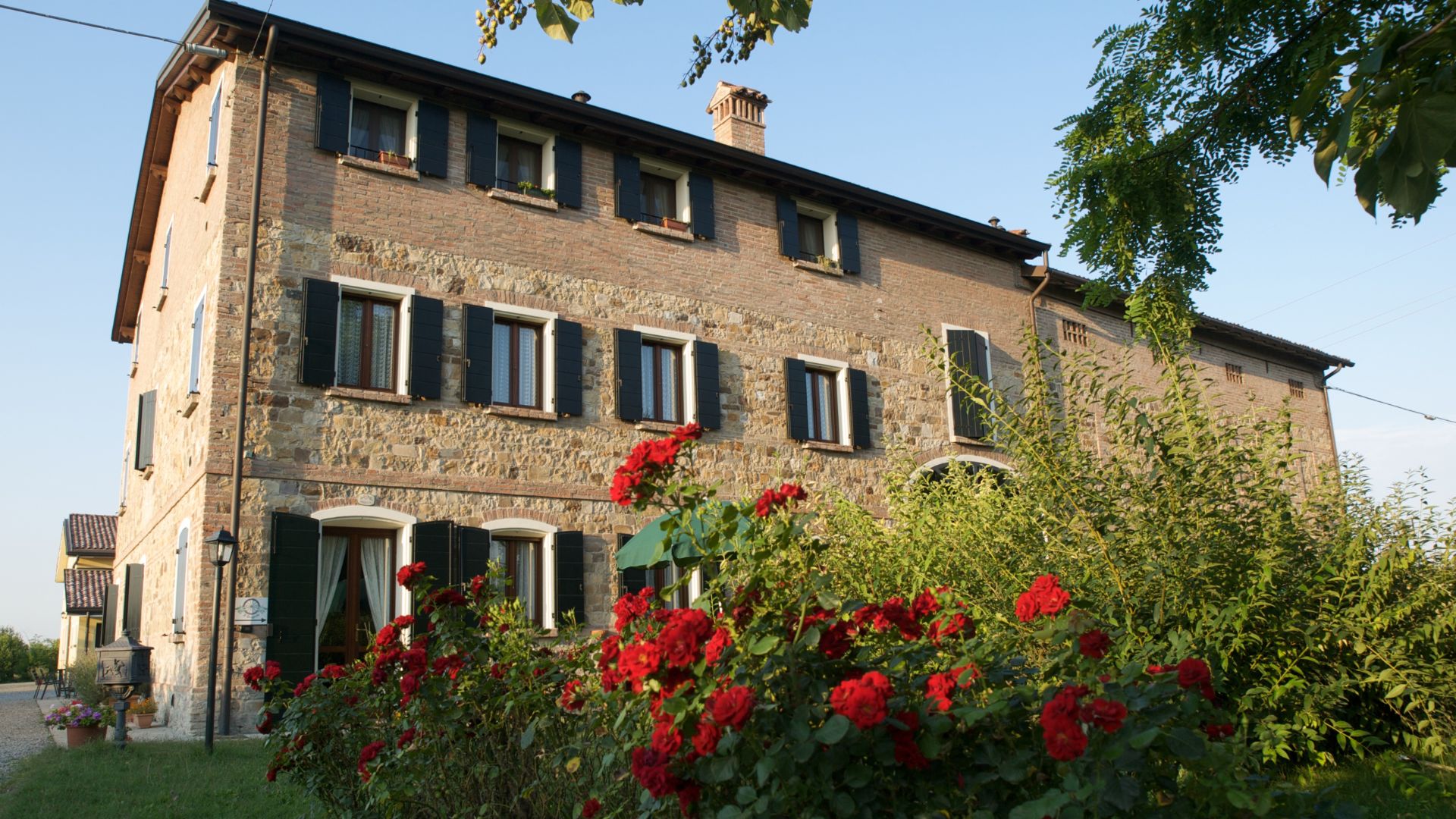
AGRITURISMO IL BRUGNOLO
Welcome to il Brugnolo
If you’re looking for completely independent apartments surrounded by greenery you really are in the right place here!
In fact, Brugnolo is immersed in the green nature of the Emilian countryside. For your relaxation, for that of your children, and again for the runs of your 4-legged friends, you will have 6000 square meters of park at your disposal!


